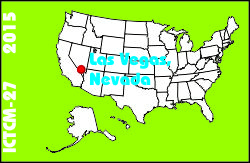
Electronic Proceedings of the Twenty-seventh Annual International Conference on Technology in Collegiate MathematicsLas Vegas, Nevada, March 12-15, 2015Paper A003
Confusion Theory for Pedagogical Decisions |
G. Donald AllenDepartment of Mathematics Texas A&M University College Station, TX 77843 gdonaldallen@gmail.com list of all papers by this author | Dianne GoldsbyDepartment of Teaching Learning and Culture Texas A&M University College Station, TX 77843 dgoldsby@tamu.edu list of all papers by this author |
| Click to access this paper: |
ABSTRACT
Confusion theory and their associated confusion matrices have been principally used to train and evaluate machine learning. A confusion matrix is also known as a contingency table or an error matrix. They have been used to measure satellite classification of landscape types, for machine recognition of alphabetic characters, and for general pattern recognition. In this paper we will use confusion matrices as an assessment tool for student learning and understanding. This will be approached by evaluating whether the subjects know in which category a given problem resides. The application of confusion theory to student learning seems to be completely new in aspects of assessment of learning.Keyword(s): pedagogy, assessment
